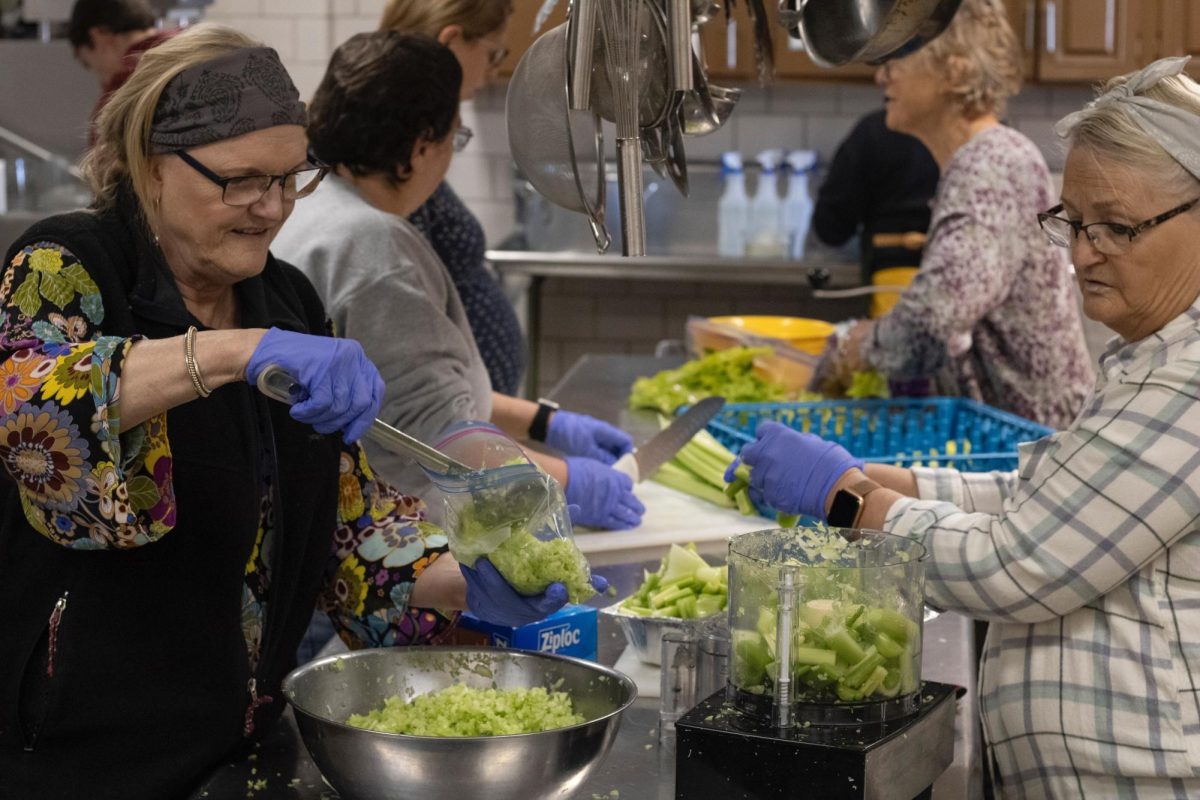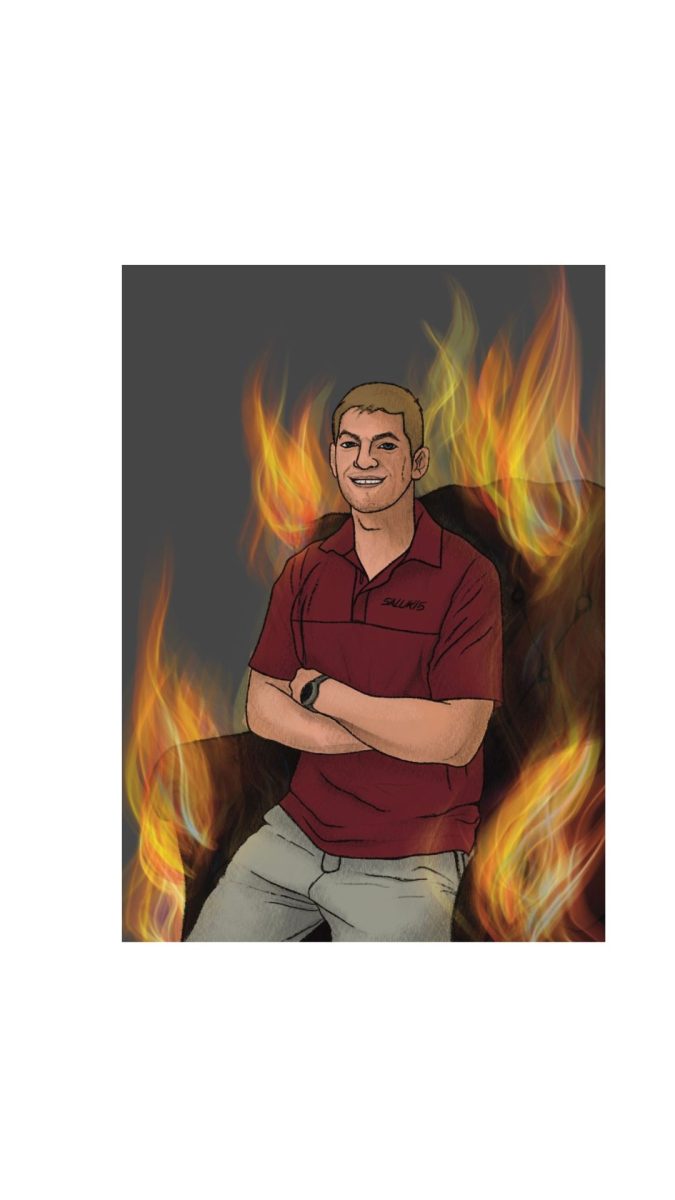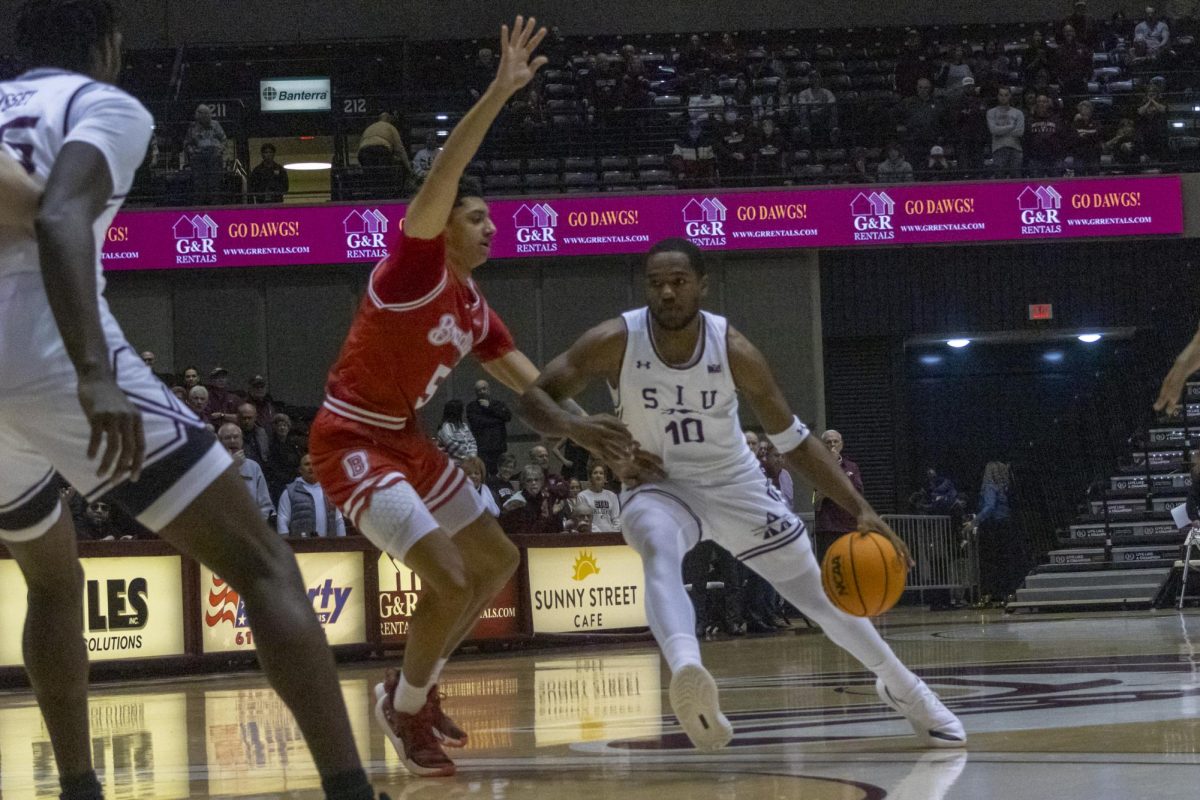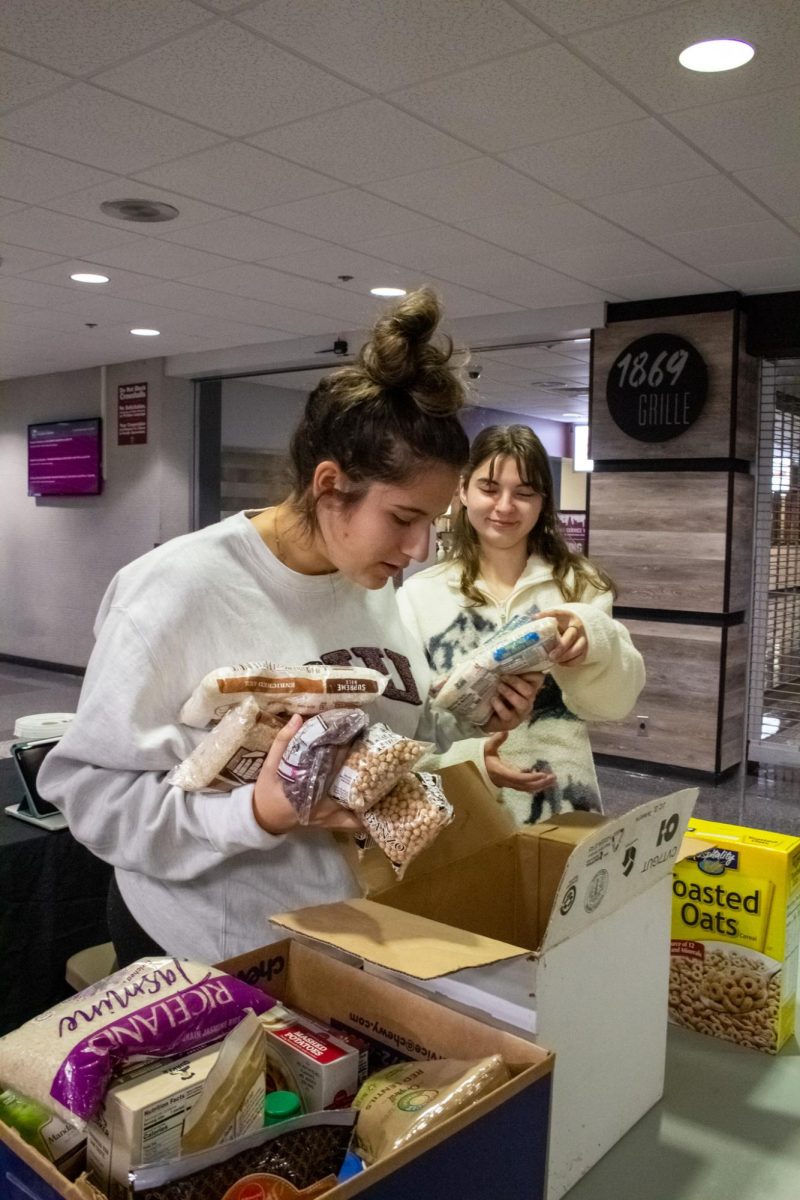In the world of air racing, skilled pilots navigate challenging courses spanning thousands of miles. The stories of female aviators often intertwine because of the Air Race Classic (ARC), an all-female aviation competition that pushes the boundaries of strategy and camaraderie within the aviation community.
This year, the ARC will begin in Carbondale at the Southern Illinois Airport. As competitors gear up for the 2024 race, many women are reflecting on their journeys into aviation, the challenges faced in the previous races and the impact this event has on their lives and the broader world of women in aviation.
The Saluki Aces is a collegiate team with two members from SIU. The team competed in the 2023 ARC last June, and finished second both overall and amongst collegiate teams. The team is hoping to compete again this year.
Advertisement
Graci McDaniel, pilot of the team, said, “I found my interest in aviation from wanting to become an astronaut, surprisingly. Although that’s still my ultimate dream, aviation seemed like the best way to go about it, without the chance to be stuck behind a desk for the next 20 or so years of my life.”
McDaniel had family members who were connected to the aviation industry, which piqued her initial interest and influenced her decision to get involved herself.
“My grandpa, Calvin McDaniel, founded the Pinckneyville airport, so aviation was a common theme in stories told at the dinner table. I took my first discovery flight my junior year of high school, and I fell in love with the profession. Hopefully as commercial space travel becomes a commodity, there will be an opportunity to help or even fly rockets one day,” McDaniel said.
She originally became involved in the ARC because of her co-pilot, Meadow Boden, who asked her to participate.
McDaniel said, “I was very in-the-dark at first, but little did I know it would be the best aviation experience I have had to this day. The ARC is an amazing organization and I look forward to participating again this year.”
The resources and donations the team received from SIU were highly beneficial for their overall success.
“SIU assisted us with the plane and fuel costs for last year’s race, which we hope will be the case this year. The ARC is pretty expensive, so we are very grateful for that burden to be taken care of. The prep work for the race took the majority of the five months before the race, including fundraising and studying for the race itself,” McDaniel said.
Advertisement*
She thinks their biggest success of the race was their strategy. Due to how the race is set up, McDaniels said she had no idea they were in the top 10 teams, let alone second place, and she plans to use similar strategies with her team this year.
“Meadow and I found ourselves in a few unique situations during last year’s race. Because you don’t know exactly where you’ll be stopping along the route, hotels had to be booked the day of, or in some cases 30 minutes before we arrived. On our Sulfur Springs, Texas leg, we had another team stay with us because there were no more rooms available. During our Cross City, Florida leg, we actually had to stay in a hangar because there were no more rooms available,” McDaniel said.
These situations provided them with opportunities to showcase their problem-solving skills and adaptability as dedicated women in the industry.
McDaniel said, “Because the race is all female, it is extremely helpful in inspiring women pilots. The competition aspect makes the race a little tense at some points, but everyone is willing to help in any way they can.”
When the teams stopped in Hastings, Nebraska, the predicted weather was poor. The teams helped each other decide the best course of action. People were also helpful with aspects of the race not related to aviation, like giving soap and medicine when needed.
“I learned so much about aviation and made so many new connections and lifelong friendships. I still keep in touch with a few of the girls from the race last year, and I’m hoping to see and meet even more people this year,” McDaniel said.
Lara Gaerte, assistant director at ARC, who started out as a racer and then began volunteering for the organization, said, “The race challenges all aspects. It’s pre-race, it’s knowing your airplane, knowing your piloting skills, but it’s also networking. Women are still a fairly small percentage of aviators in general, so it’s the ability to connect with like-minded ladies who have the same interest that you do.”
Gaerte initially got involved in aviation when she signed up for an aviation explorer post in high school. Afterwards she connected with a flight instructor for lessons to further her expertise.
Gaerte said, “I soloed the summer between my junior and senior year and got my private license before I got out of high school. And then I just continued adding ratings and went to college.”
She first took part in the ARC in 2004 as a copilot with Margaret Ringenberg as the pilot.
“I paid attention and learned as much as I could, because she [Ringenberg] was amazing at it,” Gaerte said.
The route changes every year. It’s about 2500 miles, with eight to ten stops depending on the availability of airspace. Organizations and airports apply to host the start or the terminus and then the route gets built around it.
Gaerte said, “At the end of each year’s race, the next year’s race route is published. Sometimes people will look at it and say that’s not really the route for them, it’s a lot of travel. Or they’ll look at the next year and see that it fits better.”
It’s also a financial and time commitment. For people that are only going to do it once or twice, they might look at the route and wait for the right year, or a year they have the money to compete.
“I think that even now, this race is a bucket list item for a lot of lady aviators. Some people only do it once, there’s others that continue to come back for the challenge every year, me included,” Gaerte said.
The number of people competing fluctuates from year to year, though it is generally between 50 and 60 teams.
Gaerte said, “For a lot of the local communities that we visit, this might be the only time they’ve had us there. So you get local pilots, local media looking at this event. It’s empowering.”
Amid continuous community engagement, the impact of the ARC extends far beyond the race itself. The event has become a catalyst for fostering a deeper connection between aviation enthusiasts and the broader community.
Gretchen Jahn, assistant director, leads the organization in developing the ARC’s historical database with details from 1947 to 1977. She continues to ensure current records are available and contributes to the preservation and accessibility of air race history.
Jahn credits her husband with her initial interest in air racing.
Jahn said, “It’s all my husband’s fault. Shortly after we got married in 1978. He went to Alaska, became enamored of airplanes, and got his license. I flew with him for several years as he kept encouraging me to get my license and it’s like, well, I’m doing all the navigating, I’m doing the flight planning, I’m doing the radios, what’s so magical about the left seat?”
After her husband took a three week vacation and they weren’t flying, she decided it was time to get her license. Soon after, her husband presented her with a new opportunity.
“He introduced me to the Ninety-Nines, who sponsored a local air race here in Colorado. I volunteered for it, and I was hooked,” Jahn said.
Since learning about air races, Jahn has taken part in many, and has gotten involved in ARC directly. She started volunteering in the late ‘90s, doing a lot with the first timers’ briefings, and regular briefings, until she was asked to be on the board. She was on the board for 14 years.
She said, “I’ve been racing a lot. This is going to be my 27th race this year for the ARC, and that doesn’t include all of the other races that I’ve done. I’ve also received two research scholar grants from Earhart Memorial Scholarship Fund. I take data both from the current race and from the predecessor race, and make it all available on our website.”
“This race, it’s the ultimate cross country. The FAA (Federal Aviation Administration) loves it because you’re trying to fly the perfect cross country. Get the most out of yourself, the most out of the airplane, have the very best score,” Jahn said.
For many individuals who obtain their pilot licenses, venturing beyond their local airspace or neighboring states can be a significant milestone. The ARC, spanning four days across the country and encompassing multiple states, presents a unique opportunity to go to various places that may be entirely unfamiliar to participants.
Jahn said, “This would be your opportunity to fly in a multiplicity of states, environments, airports you’ve never seen, really learn a lot, test your skills. I’m surprised by the number of students who have never tied down their airplane, have never refueled their airplane. All of these I would consider to be basic skills. This is your chance to learn them all with everybody else around you also learning.”
The earliest race was 1929, the races were open to men. And the women wanted to show that they were as qualified as men. They also hoped to create more opportunities for women in the process.
“The Powder Puff Derby, which is the predecessor to the ARC, began in 1947. After World War Two, we had all of these women who were involved in flying…airplanes and doing all sorts of wonderful things. And then the guys came back from the war and all the women were out of a job,” Jahn said.
These women were looking for opportunities to test and protect their skills, and racing turned out to be a great way to demonstrate their proficiency.
Jahn said, “That race ended in 1977, and the ARC was born. And it has really provided an opportunity for women to do a lot of things, not just flying airplanes, but there’s all of the organizational work…There’s a lot that goes on in putting on this race that really provides significant learning opportunities for women in ways that you can’t get anywhere else.”
In 2002, ARC shifted to have a larger focus on education and safety. The educational mission has caused the organization to incorporate additional items into the work. Along with prior briefings, it now requires competitors to take safety courses in advance.
“A significant element was the outreach to colleges. We’ve actively gone to the colleges and universities to recruit them to field teams. And this year, we have finally, with popular demand, added the intercollegiate class, which is specifically for the colleges and to highlight the programs that they have and the women that they have competing,” Jahn said.
A lot of these girls make friendships that last through their corporate careers or airline careers.
Gaerte said, “You have that lifelong sort of connection to people that are in all different facets of aviation now, and the colleges also make their own networking connections.”
Competing as a collegiate team provides a learning opportunity within a more controlled and supportive environment to go cross country outside of the practice area.
Jahn said, “The woman I’m racing with this year was my baby bird four years ago, on a college team. She used her experience in the race in her interview, to get a job at Frontier Airlines. They just absolutely loved hearing about everything she did with cockpit research management.”
It is a great way for a young person to get involved from the very beginning, and the learning experiences make a difference for however they decide to pursue their aviation career.
Jahn said, “You’re all participating. You’re all sweating. You’re all grumbling about the weather, but you’re also having the absolute best time, and the memories and friends you make from this last a lifetime.”
Visit the Saluki Aces’ Facebook to support them and follow their progress.
Check out the ARC website for information about the 2024 race and its past history.
Advertisement















